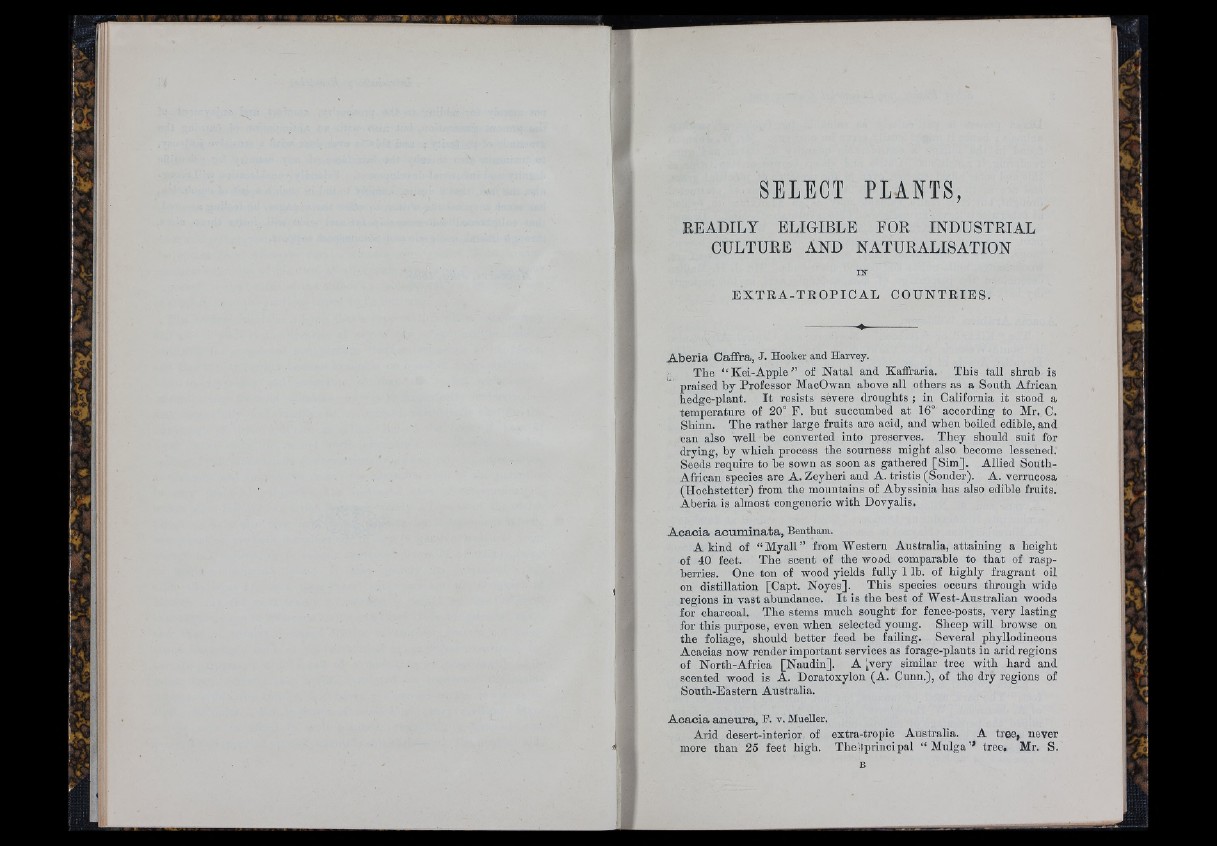
SELECT PLANTS,
READILY ELIGIBLE FOR INDUSTRIAL
CULTURE AND NATURALISATION
E X T R A - T R O P IC A L C O U N T R IE S .
Ataeria CaflFra, J. Hooker and Harvey.
^ The “ Kei-Apple” of Natal and Kaffraria. This tall shriih is
praised by Professor MacOwan above all others as a South African
hedge-plant. I t resists severe droughts ; in California it stood a
temperature of 20° F. but succumbed at 16° according to Mr. C.
Shinn. The rather large fruits are acid, and when boiled edible, and
can also well be converted into preserves. They should suit for
drying, by which process the sourness might also become lessened.
Seeds require to be sown as soon as gathered [Sim]. Allied South-
African species are A. Zeyheri and A. tristis (Sonder). A. verrucosa
(Hochstetter) from the mountains of Abyssinia has also edible fruits.
Aberia is almost congeneric with Dovyalis.
A c a c ia a c um in a ta , Bentham.
A kind of “ M y a ll” from Western Australia, attaining a height
of 40 feet. The scent of the wood comparable to th a t of raspberries.
One ton of wood yields fully 1 lb. of highly fragrant oil
on distillation [Capt. Noyes]. This species occurs through wide
regions in vast abundance. I t is the best of West-Australian woods
for charcoal. The stems much sought for fence-posts, very lasting
for this purpose, even when selected young. Sheep will browse on
the foliage, should better feed be failing. Several phyllodiueous
Acacias now render important services as forage-plants in arid regions
of North-Africa [Naudin]. A [very similar tree with hard and
scented wood is A. Doratoxylon (A. Cunn.), of the dry regions of
South-Eastern Australia.
A c a c ia a n e u ra , P. v. Mueller.
Arid desert-interior of extra-tropic Australia. A tree, never
more than 25 feet high. The'ilprincipal “ M u lg a ’^ tree, Mr. S.